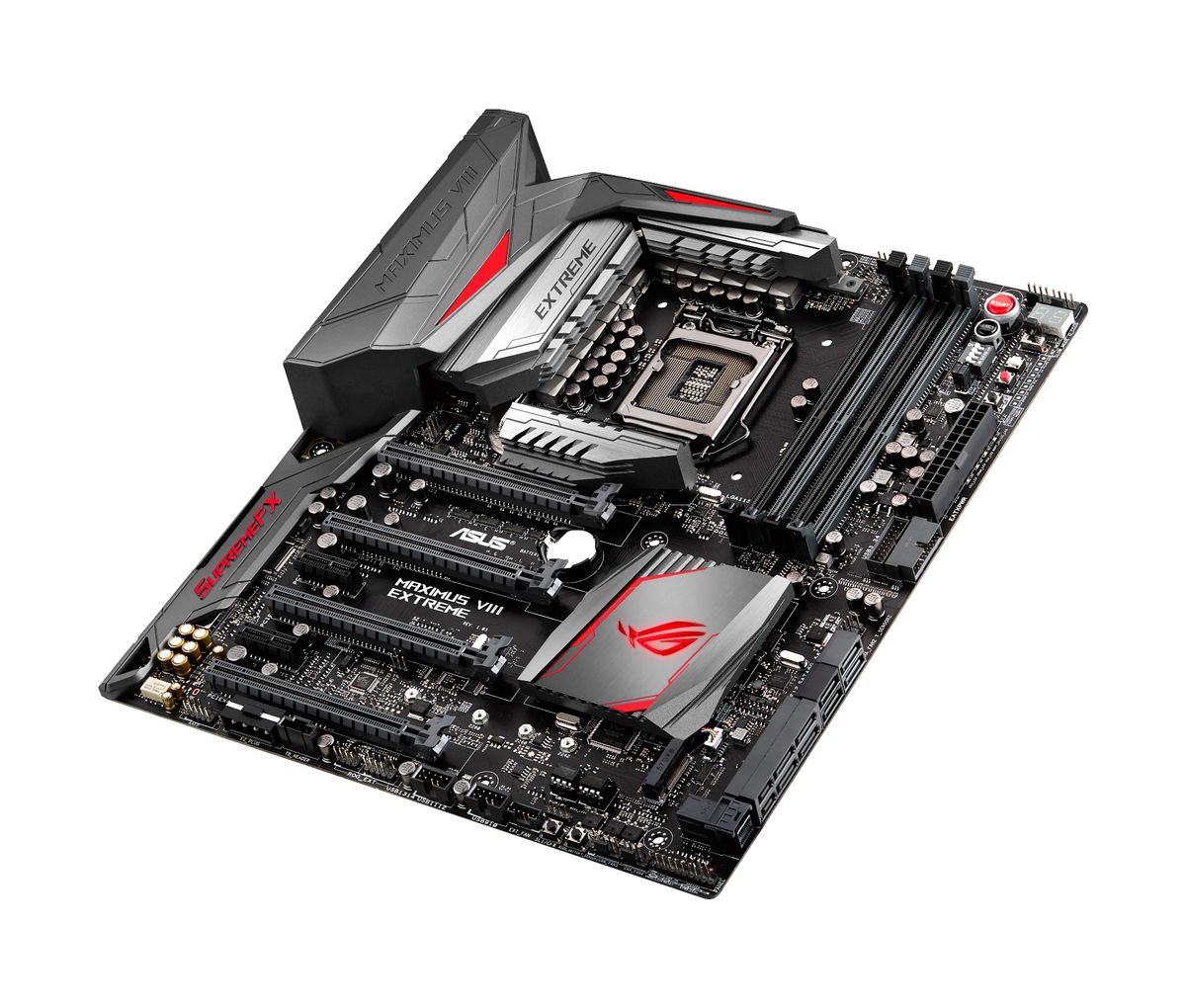
The M.2 heatsink is smaller than the one on the MSI Prestige X570 Creation, and again, for the price we'd like to have seen some sort of linked water block design cooling the chipset and M.2 slots as well as the VRMs. There's clearly some decent headroom here. It seemed to function well without water too: We measured the temperature of the chokes at 47☌ and the rear backplate atop the VRMs at 40☌ with our own IR laser probe, while the software-reported VRM temperature was 45☌ - all after a 10-minute load test. The VRM cooling solution is called EKWB CrossChill EK II and features redesigned coolant channels. Thankfully, it's not left exposed like the one on the MSI Prestige X570 Creation, although it did sit closer to our Nvidia RTX 2070 Super, which isn't going to aid its cooling. Unlike Gigabyte's X570 Aorus Master, the chipset fan included with the Crosshair was silent throughout, although it did seem to be spinning most of the time.

Sadly, the 24-pin ATX connector isn't angled like that on the MSI Prestige X570 Creation (the SATA ports and side-mounted USB 3.0 header are, at least), but there is a shroud running round the right and top sides of the board to lift the aesthetics. The reset button acts as what Asus calls a FlexKey - a multi-purpose button that can be configured to perform other tasks such as turn the RGB lighting on or off or enter the BIOS.
#MAXIMUS VIII EXTREME FORMULA PROBLEMS CODE#
There's also a full-cover metal backplate to help preserve rigidity and potentially add some extra heat dissipation into the mix.Īs you'd expect you get power, reset, and CMOS clear buttons plus USB BIOS flashback and a POST code display embedded into the OLED display above the I/O shroud by default. In addition, you get a pair of coolant flow meter headers, a thermal probe header, and a quartet of RGB headers too. The board isn't completely devoid of a premium demeanour, though, as you get an impressive total of nine four-pin fan headers with one offering up to 3A/36W of power for water-cooling pumps. Generally speaking, there are few of the unique extravagances we've seen with recent ROG efforts such as the ROG Maximus XI Gene or the new X570-based Impact, both of which made us go ' phwoar!'. Even in its Prestige X570 Creation (not a flagship, but premium) MSI managed to aid the chipset heatsink by linking it to the VRM heatsinks using a heat pipe, while Gigabyte's Aorus flagship manages to do away with the chipset fan entirely. What would have been particularly interesting here is a way to liquid-cool that chipset and do away with the fan, or at least have the option to. Those integrated, custom-made EKWB VRM water blocks that sit on top of the 16 power phases - with 14 of those going to the CPU - are a nice touch indeed, but even so we've seen similar efforts before, and they lack the pizazz of the huge Bitspower water block included on the ROG Maximus IX Extreme, which also cooled one of the M.2 slots on that board.

If anything, you might expect a bit more crazy for your money. When you consider the board here is close to £100 more than the ROG Zenith Extreme Alpha, you begin to realise just what a crazy product this is. In fact, it's possibly the dearest ATX board we've looked at too - that's right, it's not even E-ATX, and it's more expensive than any X399 boards we've reviewed as well. Perhaps an even bigger deal is the price, which at £600 we're fairly sure is the most expensive mainstream AMD motherboard we've ever reviewed here at bit-tech ( mainstream socket, not mainstream pricing - ed.).

In other words, it's AMD, not Intel, whose CPUs are supported in this flagship, super-premium motherboard - and that's a big deal. There will always be halo products, but the amazing thing with the new ROG Crosshair VIII Formula is that it sports not an LGA socket, but PGA.


 0 kommentar(er)
0 kommentar(er)
